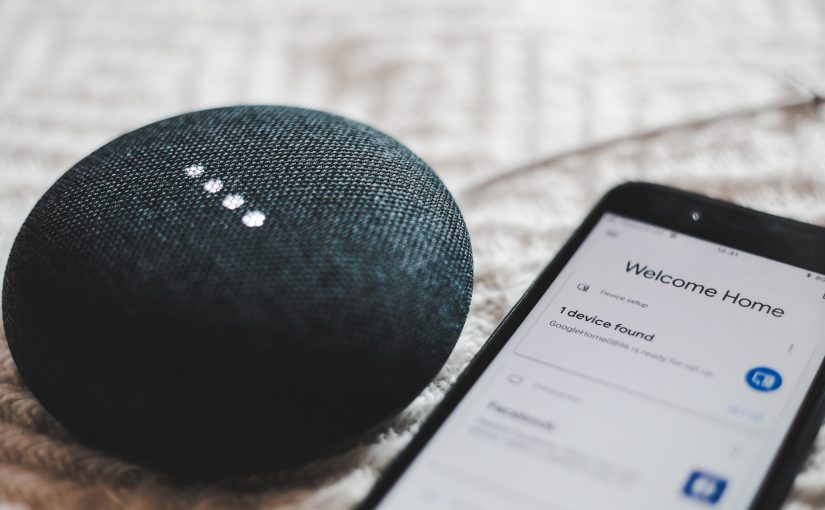How to Use Voice Assistants in Your Home
In an increasingly interconnected world, voice assistants have emerged as transformative tools for simplifying daily life.
These intelligent digital companions, like Amazon’s Alexa, Google Assistant, and Apple’s Siri, have revolutionized the way we interact with our homes.
From controlling smart devices to answering questions and managing schedules, this article explores the myriad ways you can harness voice assistants’ power to enhance convenience and efficiency within your living space.
What are Voice Assistants?
Voice assistants are artificial intelligence (AI) software programs designed to understand and respond to spoken language commands or questions from users. They use natural language processing (NLP) and voice recognition technology to interpret and process human speech.
Voice assistants can perform a wide range of tasks, including answering questions, providing information, setting alarms and reminders, controlling smart home devices, sending messages, making calls, and more.
Popular voice assistants include Amazon’s Alexa, Apple’s Siri, Google Assistant, Microsoft’s Cortana, and Samsung’s Bixby. These digital assistants are commonly found on smartphones, smart speakers, and other connected devices, offering users a convenient and hands-free way to interact with technology and access information and services.
Voice assistants continue to evolve, becoming increasingly integrated into various aspects of daily life, from entertainment and home automation to productivity and personal assistance.
How to Set Up and Use Voice Assistants in Your Home?
Here are the steps to set up and use voice assistants like Amazon Alexa, Google Assistant, or Apple’s Siri in your home:
1. Choose a Voice Assistant
Decide which voice assistant ecosystem you want to use. Standard options include Amazon Alexa, Google Assistant, and Apple Siri.
2. Purchase Compatible Devices
Ensure you have compatible smart devices that your chosen voice assistant can control. This includes smart bulbs, plugs, thermostats, locks, and more. Check for compatibility with your voice assistant of choice.
3. Set Up Your Voice Assistant
Follow the setup instructions for your voice assistant device (e.g., Amazon Echo, Google Home, Apple HomePod). Typically, this involves connecting it to your Wi-Fi network and linking it to your voice assistant account.
4. Connect Smart Devices
Use the voice assistant app on your smartphone or tablet to discover and connect your smart devices. This often involves following on-screen instructions to pair your devices with your voice assistant.
5. Customize and Name Devices
Assign names and labels to your connected devices that are easy to remember. For example, if you have a smart touchless kitchen faucet in your kitchen, name it “Kitchen Faucet.”
6. Learn Voice Commands
Familiarize yourself with the voice commands your voice assistant understands. For example, you might say, “Hey Alexa, turn off the lights,” or “Hey Google, set the thermostat to 72 degrees.”
7. Control Devices with Voice
Use your voice assistant to control connected devices. Simply say the wake word (e.g., “Alexa,” “Hey Google”) followed by your command. For example:
- “Hey Siri, play my favorite playlist.”
- “Hey Google, turn on the coffee maker.”
- “Alexa, what’s the weather forecast for today?”
8. Set Up Routines and Automations
Many voice assistants allow you to create routines or automation. For example, you can set up a “Good Morning” routine that turns on the lights, adjusts the thermostat, and provides the weather forecast when you say, “Good morning.”
9. Control Devices Remotely
Use the voice assistant app on your smartphone to control your devices while away from home. This can be useful for adjusting thermostats or checking security cameras.
10. Explore Third-Party Integrations
Many voice assistants support third-party integrations, allowing you to control various devices and services. For example, you can connect your voice assistant to music streaming services, smart home security systems, and more.
11. Privacy and Security
Be mindful of your privacy and security settings. Review and adjust permissions as needed to protect your data.
12. Regular Updates
Ensure your voice assistant device and its companion app are regularly updated to receive new features and security patches.
Note: Remember that the specific steps and commands may vary depending on the brand and model of your voice assistant and smart devices. Always refer to the user manuals and official documentation for detailed instructions.
Advanced Voice Assistant Capabilities
Advanced voice assistants have evolved significantly in recent years, offering many capabilities extending beyond basic voice recognition and simple commands. Some of the advanced capabilities of voice assistants include:
Natural Language Processing (NLP)
Advanced voice assistants can understand and respond to natural, conversational language rather than rigid commands. This makes interactions with the assistant feel more intuitive and human-like.
Multimodal Interaction
Voice assistants can work in tandem with visual interfaces. For instance, they can display information on screens, provide visual feedback, or process commands involving voice and touch inputs, like smartphones or smart displays.
Context Awareness
These assistants can remember previous interactions and use that context to provide more relevant responses. For example, if you ask, “Who is the president?” and then follow up with “How tall is he?” the assistant will understand that you’re still talking about the same person.
Multi-Step Tasks
Advanced voice assistants can perform complex, multi-step tasks. For instance, they can help you plan a trip by booking flights, reserving hotels, and scheduling transportation—all through a single conversation.
Personalization
They can recognize individual users by their voices and tailor responses or recommendations based on the user’s preferences and history. This is especially useful for tasks like music recommendations or calendar management.
Integration with Third-Party Apps and Services
Voice assistants can connect with a wide range of third-party apps and services, allowing users to control smart home devices, order food, make reservations, and perform other tasks through voice commands.
Continuous Learning
These assistants continually improve their understanding and responses through machine learning algorithms, which means they better understand and assist users over time.
Voice Commerce
Users can shop online, place orders, and make payments through voice assistants. This includes adding items to a shopping cart, checking out, and even tracking deliveries.
Voice Search
Advanced search capabilities enable voice assistants to retrieve information from the internet effectively. You can ask them questions, request specific facts, or search for local businesses and services.
Emotional and Sentiment Analysis
Some advanced voice assistants can detect emotional cues in a user’s voice, providing a more empathetic and tailored response. For instance, they might adjust their tone when speaking to a user who sounds upset.
Security and Authentication
They can use voice recognition as a form of biometric authentication to unlock devices or access sensitive information, enhancing security.
Language Support
Advanced voice assistants can understand and respond in multiple languages and dialects, making them accessible to a broader audience.
Privacy and Security Concerns Users Should Be Aware Of
While advanced voice assistants offer numerous benefits and convenience, they also raise significant privacy and security concerns that users should be aware of:
1. Voice Data Storage
Voice assistants typically store voice recordings of user interactions, often on remote servers. These recordings may be kept indefinitely, and concerns arise over who has access to these recordings and how they are used.
2. Data Breaches
If the servers holding voice data are compromised, sensitive information can be exposed. This may include personal conversations, financial information, or other private details.
3. Eavesdropping
There have been instances where voice assistants mistakenly activate and record conversations without user initiation, leading to concerns of inadvertent eavesdropping by tech companies.
4. Data Mining and Profiling
Companies may use the data collected from voice interactions to create detailed user profiles, which can be used for targeted advertising or even sold to third parties, raising concerns about user privacy.
5. Accidental Activation
Voice assistants can sometimes activate unintentionally, especially if their wake word or phrase is similar to common speech patterns. This can lead to unexpected recordings and privacy breaches.
6. Third-Party Apps
Users who grant third-party apps access to their voice assistant may inadvertently expose their data to additional security risks if those apps have vulnerabilities.
7. Authentication Risks
While voice recognition can be a convenient authentication method, it may not be as secure as other forms of biometric authentication, as voiceprints can be mimicked or recorded without consent.
8. Device Security
Voice assistants are often integrated into various devices, including smartphones and smart speakers. If these devices are compromised, attackers can access the voice assistant’s functionality and potentially sensitive information.
9. User Profiling and Targeting
The information collected by voice assistants can be used to build detailed user profiles, leading to personalized advertising. Still, it also raises concerns about manipulating user behavior and opinions.
10. Children’s Privacy
Voice assistants may not always differentiate between adult and child voices, potentially collecting data from underage users without proper consent or safeguards.
To address these concerns, users need to take steps to protect their privacy and security when using voice assistants:
Review Privacy Settings
Check the privacy settings on your voice assistant and associated accounts to understand what data is being collected and how it’s used. Adjust settings to enhance your privacy.
Use Strong Authentication
If voice recognition is used for authentication, consider using additional authentication methods, such as PINs or passcodes, for sensitive tasks.
Monitor Voice History
Regularly review and delete voice recordings stored by your voice assistant to minimize the data collected and stored.
Be Cautious with Third-Party Apps
Be selective when granting access to third-party apps and ensure they have reputable privacy policies and security measures in place.
Disable Voice Assistants When Not in Use
Turn off voice assistants or mute the microphone when you’re not actively using them to minimize the risk of accidental activation.
Keep Software Updated
Ensure that all devices and apps connected to your voice assistant are up to date with the latest security patches.
Educate Yourself
Stay informed about the privacy policies and practices of the companies behind voice assistants, and be cautious about sharing sensitive information through them.
Conclusion
Voice assistants have transformed our homes into smart, responsive environments, offering unparalleled convenience and efficiency.
As we’ve explored their myriad possibilities, it’s evident that harnessing their power requires a balance between convenience and privacy.
By understanding their advanced capabilities and implementing security measures, we can make the most of voice assistants while safeguarding our personal information.
Embracing these digital companions opens doors to a future where technology seamlessly enhances our daily lives.
Featured Image Credit: Provided by the Author; Pexels; Thank you!
























